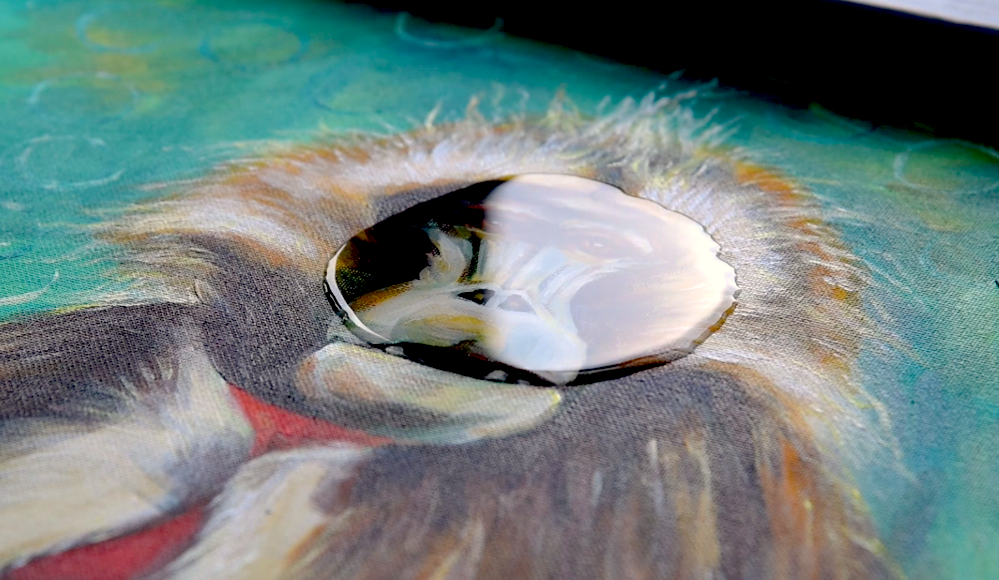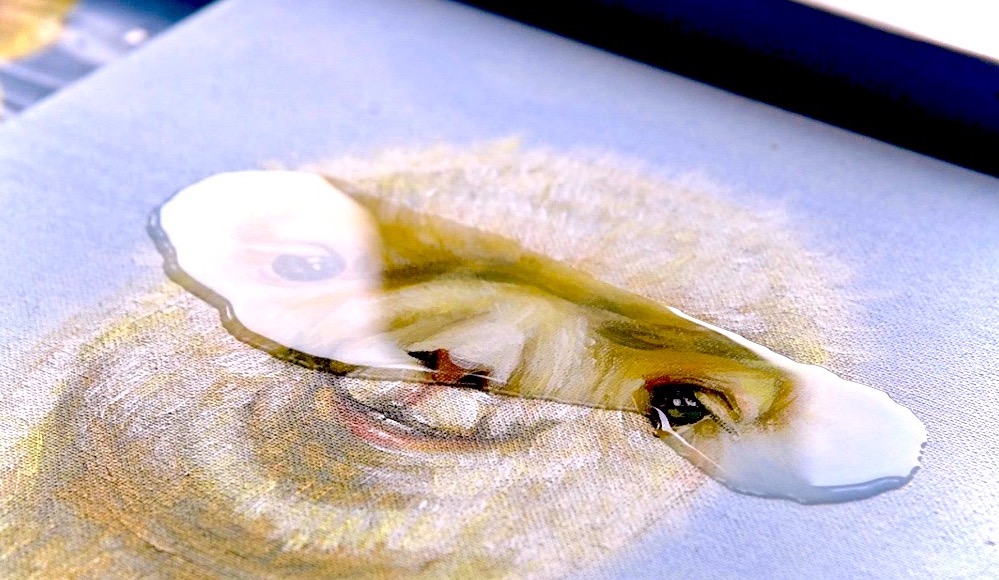This painting was based on a photo we shoot at the Bristol Wild Place Project. It’s quite extraordinary to see Geladas in the UK, as they live only in the high mountains of Ethiopia. This high-altitude homeland is replete with steep, rocky cliffs. With their short and stumpy fingers, geladas are adept rock climbers.
Here are some facts about gelada:
- Geladas are also known as “bleeding-heart monkeys”, you will know why when you look at them.
- These baboon-size animals are the world’s most terrestrial primates, except for humans. As mostly grass-eaters, they are the last surviving species of ancient grazing primates that were once numerous.
- Geladas live in multi-level societies. Sometimes geladas sill form large herds of up to 1200 individuals. These are some of the largest groups observed among any primate. Geladas can form such large groups because they feed mostly on grass, which is widely available. However, a diet of nutrient-poor grasses means 10 hours of grazing per day, compared to just 4 hours a day for the average monkey.
- Good at communications. Because geladas spend so much time foraging, they are unable to properly bond through grooming, like many other primates. Walk through a band of geladas foraging and you will be deafened by the sounds of grunts, groans, and squeals, over 30 of which have been identified by researchers so far.





